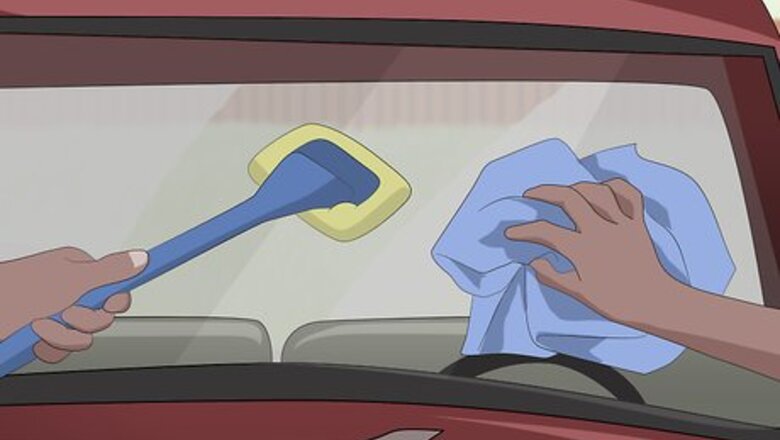
views
Keeping Your Car Clean
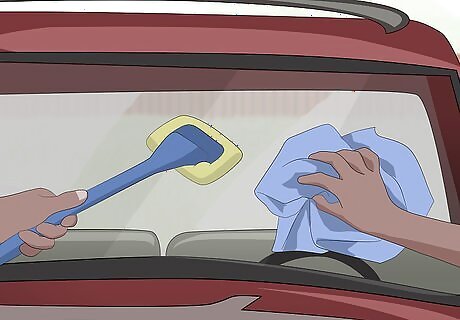
Clean your windshield. Use windshield cleaner to clean the inside and outside of your windshield at least once a month. If you know you are about to drive for a lengthy period of time at night, make sure to clean your windshield beforehand as well. Alternatively, you can use a mixture of water, dishwashing detergent and vinegar to clean your windshield. Mix six cups (1,400 ml) of water, a tablespoon (30 ml) of detergent and a cup (240 ml) of vinegar together until well-combined. Fill a spray bottle with the mixture and use a clean microfiber cloth to wipe your windshield clean.

Make sure your mirrors and windows are clean. Clean your side mirrors and windows once a month, or as they become dirty. You can use the detergent-vinegar solution to clean these as well. Spray the solution onto a microfiber cloth. Wipe the inside and outside of your windows clean, as well as the surfaces of your outside mirrors. To avoid streaks, make sure to dry your windows and side mirrors with a clean microfiber cloth afterwards.
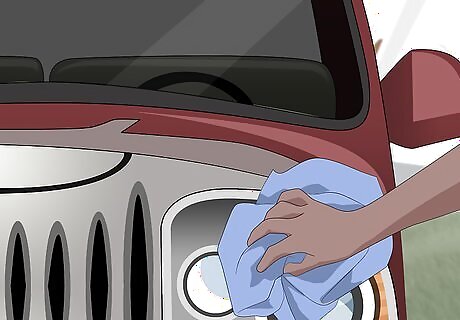
Clean your headlights. You can use toothpaste to do this. Wet your headlights with a damp cloth. Apply a tablespoon (30 ml) of toothpaste to each headlight. Using the damp cloth, scrub the toothpaste over the entire surface. Scrub for one minute, focusing on dirty areas. Then rinse the headlights with water and dry them with a clean microfiber cloth. If the toothpaste method does not work, then you may need to get your headlights professionally buffed and cleaned.
Increasing Your Ability to See at Night
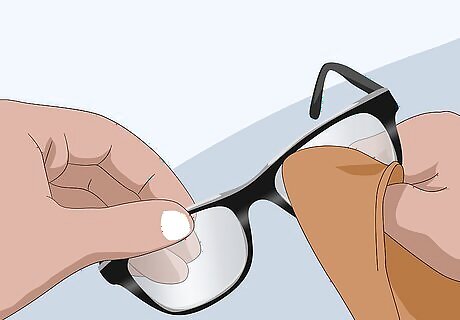
Keep your glasses clean. Before driving, always make sure your glasses are clean. Use soap and water to remove dirt, grime and debris from the lenses. Finish cleaning your lenses by drying them with a soft microfiber cloth.
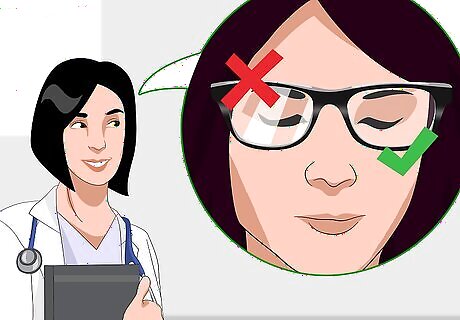
Look into anti-reflective coating. If you wear glasses, ask your optometrist about anti-reflective (AR) coating. AR coating is an ultra-thin film made from silicon and zircon. By reducing internal reflection and transmitting more light, the film will improve your vision while driving during the night.
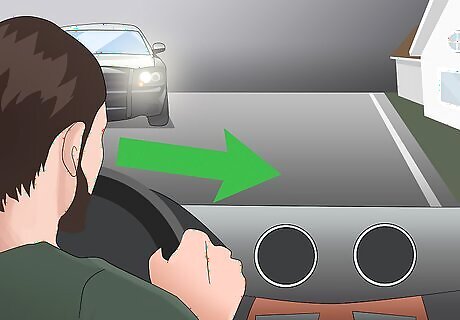
Avoid looking straight into the headlights of oncoming traffic. Instead, avert your eyes when oncoming traffic approaches. Do this by looking down and to the right. Focus on the white line on the side of the road, or the pavement until the car passes. As you do this, you will still be able to see other cars around you with your peripheral vision.
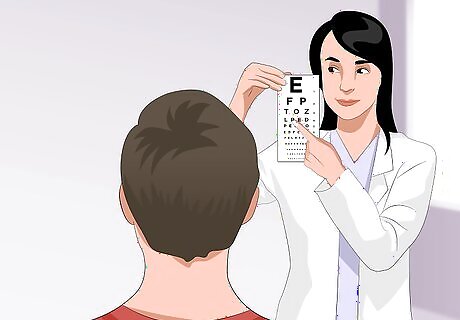
Get an eye check-up regularly. Having difficulty seeing and other medical problems associated with the eyes can exacerbate glare while driving at night. Make an appointment to see an optician. This way you can catch and correct any eye problems to avoid vision problems while driving at night. The American Optometric Association recommends that you get an eye test every two years if you are under 60, and annually if you are 60 or older. In the UK, those over the age of 60 can get discounts of up to 25% off glasses at some optic retailers.
Adjusting Your Mirrors and Lights
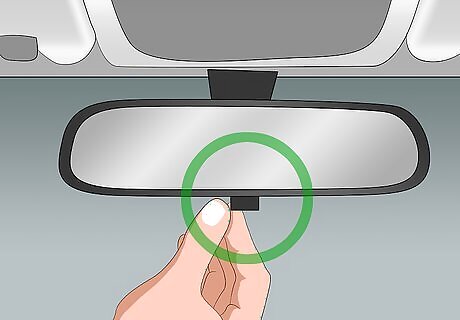
Use your rearview mirror's night setting. Look for a small switch or lever under or behind your rearview mirror. By switching this lever, you can change your rearview mirror to its night setting. With this setting on, the headlights from the cars driving behind you will appear much dimmer, and they are less likely to produce glare while driving at night. If your car doesn't have self-dimming mirrors, then you may want to replace your mirrors with self-dimming ones, or look into getting a car that has these already.

Make sure your headlights are aligned properly. You will need to go to your car dealership or auto mechanic to have this checked. Having your headlights properly aligned will help you see better while driving at night. It will help other cars see you better at night as well. Have your headlight alignment checked once a year.
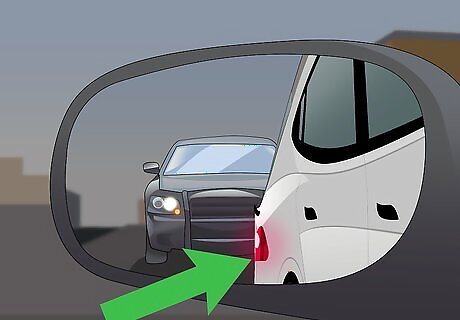
Check the alignment of your side mirrors. To properly align your side mirrors, rest your head against the driver seat's window. Adjust the mirror outwards until you can see your car's rear corner. Then, lean to the other side until your head is in the center of the car. Adjust your other mirror until you can see the rear corner on the other side of your car. Having your side mirrors properly aligned helps reduce glare while driving at night, as well as blind spots.
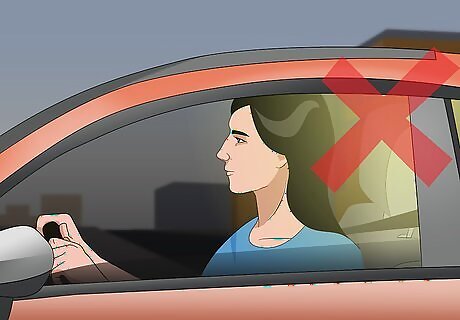
Keep you interior lights off. Having the lights on inside your car can exacerbate glare, making it even more difficult to see. If you have to, only use these lights for a couple of seconds while driving at night.




















Comments
0 comment